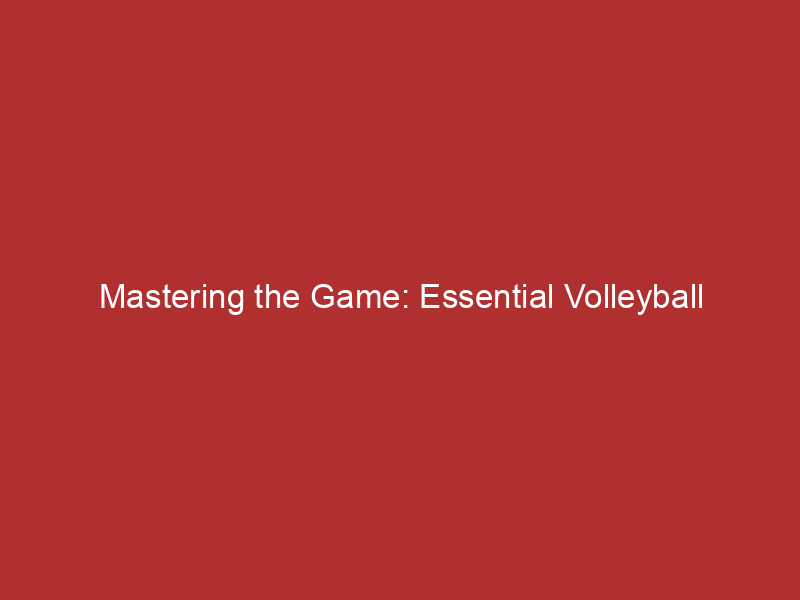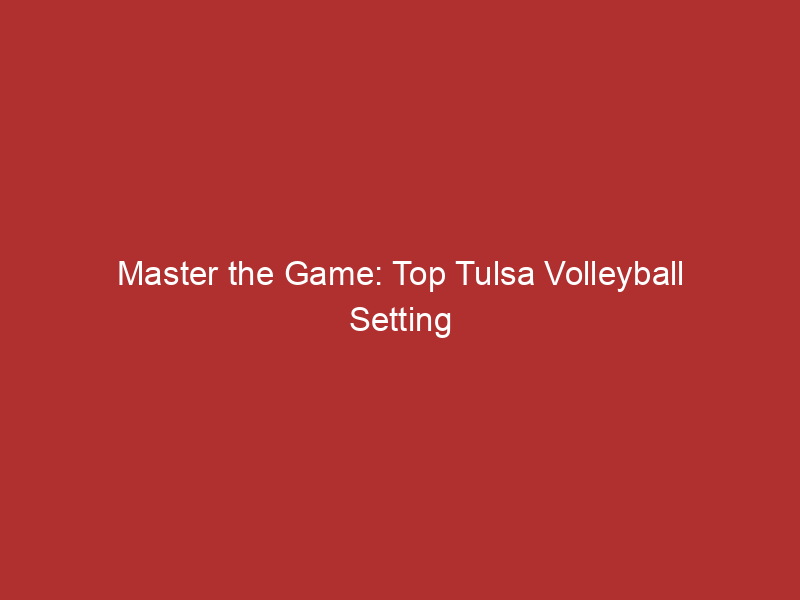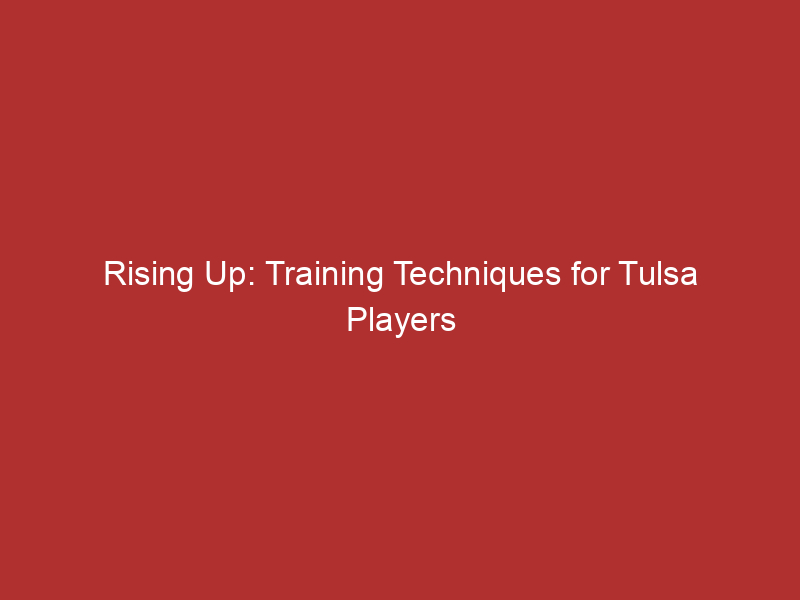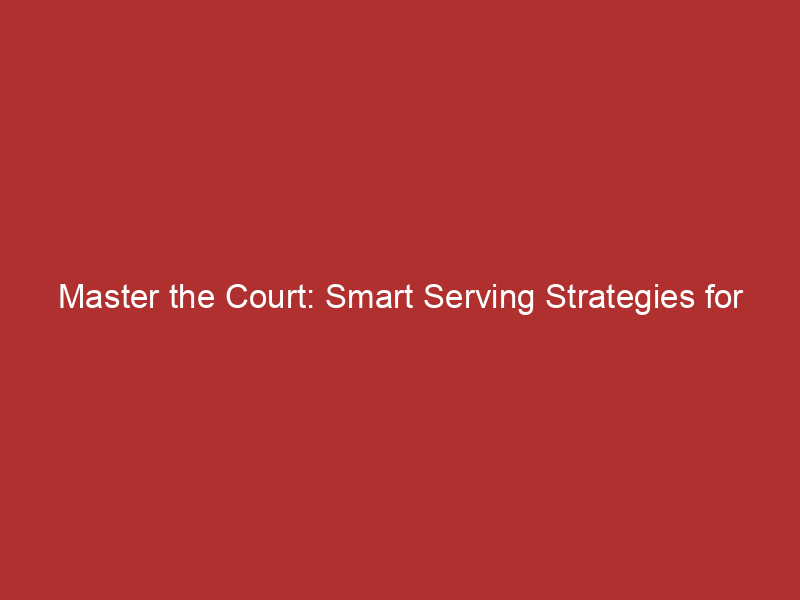Introduction to Volleyball Blocking Techniques
Blocking in volleyball is a fundamental skill that can make a significant difference in the game. It’s not just about stopping the ball; it’s about redirecting it, taking control of the game, and outsmarting your opponent. This blog post will help you understand the importance of blocking in volleyball and introduce you to the basic principles of effective volleyball blocking.
- Understanding the Importance of Blocking in Volleyball
Blocking is a crucial defensive strategy in volleyball. It’s the first line of defense against an opponent’s attack. A successful block can not only prevent the opponent from scoring but also create opportunities for your team to score.
Blocking is not just about height and jumping ability. It’s also about timing, positioning, and teamwork. A well-executed block can disrupt the opponent’s attack, force them to change their strategy, and give your team an advantage.
Statistics show that teams with effective blocking techniques often have higher winning rates. For example, in the 2019 FIVB Volleyball Men’s World Cup, the top three teams with the most successful blocks also ranked in the top four in terms of overall performance.
- Basic Principles of Effective Volleyball Blocking
The basic principles of effective volleyball blocking include:
| Principle | Description |
|---|---|
| Timing | The blocker must jump at the right time to meet the ball at its highest point. |
| Positioning | The blocker must position themselves between the ball and the court, aiming to direct the ball back into the opponent’s court. |
| Teamwork | Blocking often involves two or three players working together to cover more area and increase the chances of a successful block. |
| Technique | The blocker must use proper hand and arm technique to control the direction of the ball. |
Mastering these principles can significantly improve your blocking skills and overall performance in volleyball.
Tulsa Volleyball Drills: A Comprehensive Guide
In this guide, we will delve into the essential volleyball drills that every player in Tulsa should master. Our focus will be on the crucial aspect of blocking techniques. Let’s get started!
Volleyball Blocking Techniques
Blocking is a fundamental skill in volleyball. It requires precision, timing, and technique. Here are three key areas to focus on:
- Positioning for Blocking
- Timing and Coordination
- Hand and Arm Techniques
Proper positioning is the cornerstone of effective blocking. It’s important to stay square to the net, with your feet shoulder-width apart. Your hands should be raised above your head, ready to block the ball. Always keep an eye on the ball and the opponent’s hitter. This will help you anticipate the direction of the ball and position yourself accordingly.
Timing is everything in volleyball blocking. You need to jump at the exact moment the opponent hits the ball. Jump too early, and you’ll miss the block. Jump too late, and the ball will be past you. Practice drills that enhance your timing and coordination. Remember, it’s not about how high you jump, but when you jump.
Your hands and arms play a crucial role in blocking. Extend your arms fully and keep your hands wide open. This increases the area you can cover, improving your chances of blocking the ball. Your fingers should be spread apart, but not rigid. This allows for a better block and reduces the risk of finger injuries.
Remember, practice makes perfect. The more you work on these techniques, the better your blocking skills will become. So, get out there and start practicing!
Block and Tackle Drills
Now that we’ve covered the basics of volleyball blocking techniques, let’s move on to some specific drills that can help you improve your skills. These drills are designed to help you practice and perfect your blocking technique, whether you’re a beginner or an experienced player looking to refine your skills.
- Single Block Drills
- Double Block Drills
- Triple Block Drills
Single block drills are a great starting point for beginners. In these drills, you’ll practice blocking the ball by yourself. This helps you to focus on your positioning, timing, and hand and arm techniques. For example, you might practice jumping up to block the ball at the net, focusing on reaching as high as you can and positioning your hands correctly to deflect the ball.
Once you’re comfortable with single block drills, you can move on to double block drills. In these drills, you’ll work with a partner to block the ball. This requires good communication and coordination, as you’ll need to work together to effectively block the ball. You might practice timing your jumps together, or coordinating your hand and arm positions to cover more of the net.
Triple block drills are the most advanced of the three. These drills involve three players working together to block the ball. This requires even more communication and coordination than double block drills, and is a great way to practice for high-level competitive play. In these drills, you might work on coordinating your jumps and hand positions, or on communicating quickly and effectively to cover the net.
Remember, practice makes perfect. The more you work on these drills, the better your blocking skills will become. So get out there and start blocking!
Volleyball Training in Tulsa: Improving Volleyball Blocking
For volleyball players in Tulsa, mastering the art of blocking is crucial. Blocking is a fundamental skill that can significantly enhance your game performance. This section will guide you through practical volleyball block drills that can help improve your blocking skills.
Practical Volleyball Block Drills
Here are three effective blocking drills that you can practice to improve your blocking skills:
- Wall Blocking Drills
- Net Blocking Drills
- Partner Blocking Drills
Wall blocking drills are a great way to practice your timing and hand positioning. Stand close to a wall and jump up as if you’re blocking a ball. Try to touch the highest point on the wall with your fingertips. Repeat this drill for several minutes each day to improve your blocking skills.
Net blocking drills help improve your footwork and timing. Stand at the net and practice moving laterally along it, jumping up to block as if a ball is coming over. This drill can help you get used to the quick movements required during a game.
Partner blocking drills can be very effective in improving your blocking skills. In this drill, you and a partner take turns attacking and blocking. This not only helps improve your blocking but also gives you a chance to practice against different types of attacks.
Remember, practice makes perfect. The more you practice these drills, the better your blocking skills will become. So, get out there and start blocking!
Techniques for Volleyball Blocking
Mastering the art of blocking in volleyball is a combination of several techniques. Let’s dive into three essential techniques that can significantly improve your blocking skills: footwork, jumping, and hand and arm techniques.
-
Footwork Techniques
Footwork is the foundation of a successful block. It’s all about positioning yourself correctly and quickly. The key is to move your feet swiftly and smoothly along the net. The “shuffle step” is a common footwork technique used by many professional players. It involves moving sideways by shuffling your feet, keeping them parallel to the net. This technique allows you to maintain balance and prepare for the jump.
-
Jumping Techniques
Once your footwork is in place, the next step is the jump. The goal is to reach as high as possible and cover a large area over the net. The “block jump” technique is a popular choice among players. It involves bending your knees, swinging your arms backward, and then propelling yourself upwards. Remember, timing is crucial. You should jump just as the opposing player hits the ball.
-
Hand and Arm Techniques
Finally, your hands and arms play a pivotal role in blocking. They are the last line of defense against the incoming ball. Your hands should be wide open, and your fingers spread apart to cover more area. The “press and penetrate” technique involves pushing your hands and arms over the net as you jump, aiming to deflect the ball back into the opponent’s court. Remember, your palms should face the opponent’s court, and your thumbs should point to the ground.
By mastering these techniques, you can become a formidable blocker, making it difficult for your opponents to score points. Practice these techniques regularly, and you’ll see a noticeable improvement in your blocking skills.
Tulsa Volleyball Training: Advanced Blocking Techniques
Blocking is a vital skill in volleyball, and mastering it can significantly improve your game. In this section, we will explore advanced blocking techniques that are part of the Tulsa Volleyball Training program.
Volleyball Drills for Blocking
Here are three advanced blocking drills that can help you improve your blocking skills. Remember, practice makes perfect, so be sure to incorporate these drills into your regular training routine.
- Advanced Single Block Drills
- Advanced Double Block Drills
- Advanced Triple Block Drills
In this drill, you will practice blocking a single attacker. The goal is to improve your timing and positioning. You will need a partner to toss the ball towards you. As the ball comes over the net, jump and extend your arms to block it. Repeat this drill until you can consistently block the ball.
This drill is similar to the single block drill, but with two attackers instead of one. You and a teammate will need to coordinate your movements to successfully block the ball. This drill not only improves your blocking skills but also enhances your teamwork and communication on the court.
The triple block drill is the most challenging of the three. It involves three blockers and requires excellent coordination and timing. This drill is ideal for advanced players who want to take their blocking skills to the next level.
Remember, the key to successful blocking is timing and positioning. With these advanced drills, you can enhance your blocking skills and become a formidable player on the court. Keep practicing, and you’ll see improvement in no time!
Tulsa Block and Tackle Volleyball Drills
Block and tackle drills are integral to any volleyball training program. These drills focus on enhancing the player’s blocking skills, which are essential in preventing the opposing team from scoring. Here are three effective block and tackle drills that are commonly practiced in Tulsa:
- Block and Tackle Drill 1: The Solo Block
- Block and Tackle Drill 2: The Double Block
- Block and Tackle Drill 3: The Triple Block
This drill is designed to improve a player’s timing and jumping ability. The player stands at the net and jumps to block an incoming ball, simulating a real game scenario. This drill helps the player to develop a sense of when to jump and how high to reach to effectively block the ball.
In this drill, two players stand side by side at the net and jump to block the ball together. This drill not only improves timing and jumping ability, but also enhances teamwork and coordination. The double block is a powerful defensive move in volleyball, and this drill helps players to master it.
The triple block drill involves three players blocking the ball together. This is the most challenging block and tackle drill, as it requires excellent timing, jumping ability, and coordination among the three players. However, a successful triple block can be a game-changer, making this drill an important part of advanced volleyball training.
By consistently practicing these block and tackle drills, players can significantly improve their blocking skills, making them formidable opponents on the volleyball court. Remember, practice makes perfect!
Conclusion: Mastering the Net
In this comprehensive guide, we’ve explored various aspects of volleyball blocking techniques. From the basics to the advanced strategies, we’ve covered it all. Now, let’s summarize the key takeaways and discuss the next steps in your volleyball training journey.
- Key takeaways for improving volleyball blocking
- Next steps in your volleyball training journey
Firstly, remember that blocking is not just about height and power. It’s about timing, positioning, and teamwork. Always keep your eyes on the ball and anticipate the opponent’s move. Practice the footwork and hand positioning drills regularly to improve your blocking skills.
Secondly, don’t forget the importance of mental preparation. Stay focused, be patient, and never underestimate your opponents. Every game is a new opportunity to learn and improve.
Lastly, always remember that practice makes perfect. The more you practice, the better you’ll get. So, keep practicing and never give up!
Now that you’ve mastered the basics and learned some advanced techniques, it’s time to take your training to the next level. Here are some suggestions:
1. Join a local volleyball club or team: This will give you the opportunity to practice regularly and compete against other players. It’s a great way to improve your skills and gain experience.
2. Hire a personal coach: If you’re serious about improving your volleyball skills, consider hiring a personal coach. They can provide personalized training programs and give you valuable feedback.
3. Participate in volleyball tournaments: This is a great way to test your skills and learn from the best. Plus, it’s a lot of fun!
Remember, the journey to mastering the net is a marathon, not a sprint. So, take your time, enjoy the process, and keep improving. Good luck!






